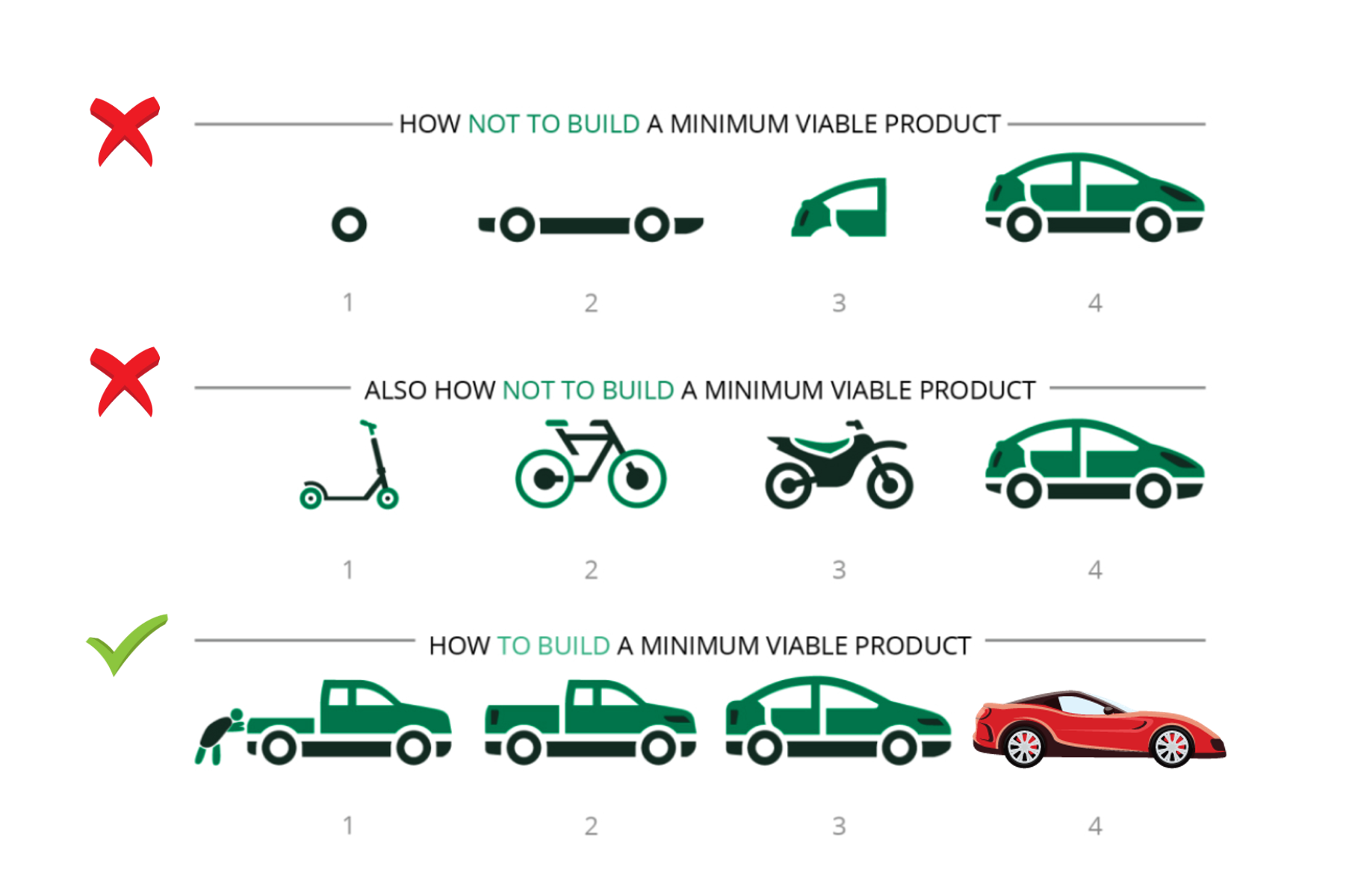Welcome to your guide on how to build a minimum viable product — an important milestone in the life of any early-stage startup.
To generate revenue from your product or service at scale, you’ll need to establish product market fit — when a company develops an offering that is proven, through sales and other metrics, to meet the needs of a specific customer base. The first steps in this journey are to build your minimum viable product (MVP) and identify your minimum viable audience.
Many startup founders and their employees are on the same journey — and it’s one of the most common areas of need for York IE’s Advisory as a Service clients.
Let’s first define the MVP, and then I’ll share some key strategies I’ve learned in my years of product management and development, which you can use to build your MVP.
What Is a Minimum Viable Product?
A minimum viable product is a functional version of your offering that isn’t necessarily complete from a development standpoint but still addresses the problem your customers are facing. It’s a starting point for introducing your product to customers.
An MVP is somewhere between a prototype and a finished product. You’re trying to deliver something of value to your customers — a version of your product that allows you to gather feedback and continue tweaking.
What Should an MVP Include?
A minimum viable product should include:
- the features that demonstrate your product’s primary value proposition;
- the capabilities that are your main differentiators; and
- a method of collecting user feedback.
The features that demonstrate your value proposition will be the ones that are most beneficial to potential customers. Your differentiators are the features that make your product stand out in the market and give customers a reason to choose your product over others.
For example, if you’re building project management software for small and medium-size businesses, your primary value proposition could be its ability to streamline team collaboration and increase productivity. And its differentiators could be real-time analytics and reporting, or integrations with Google Drive and Slack.
By including a method of collecting user feedback in your MVP, you can better understand what customers like and dislike about your product, which will enable you to make improvements and add new features. You can collect feedback through surveys, interviews or user testing. When you build your MVP with feedback incorporated, you make sure your product is meeting customer needs and is on the right track for long-term success.
Why Do You Need an MVP?
You need a minimum viable product to help you:
- identify customer needs;
- make the most of your development resources; and
- find product market fit faster.
Identify Customer Needs
One of the biggest mistakes we see founders make is building a full-featured product that they believe customers will want to buy, based on their own experiences, and then bringing it to market. We call this the product-out approach.
Take a market-in approach instead. Do research to identify what your customers need, then build your MVP and iterate from there.
Make the Most of Your Development Resources
If you were a chef, you’d probably cook a brand new dish for friends and family before serving it to an entire banquet hall. This way, you could find out if you need more seasoning, greater portions or different ingredients — before you’ve spent time and money making it at scale.
Your MVP works the same way. You won’t spend months or years developing a complete offering that’s totally untested by the market.
Find Product Market Fit Faster
By the very nature of identifying customer needs and efficiently developing a product to meet those needs, you’ll be on the path to finding product market fit. Lack of product market fit is one of the biggest causes of startup failure, so it’s important to nail this as quickly as possible.
How to Build a Minimum Viable Product
To build a minimum viable product, follow these four steps:
- Do your research.
- Select your target audience — and stick with it.
- Ruthlessly prioritize your product features.
- Create a constant feedback loop.

Step 1: Do Your Research
There are lots of ways to conduct market research for your startup. In the context of product development, start by asking yourself these questions:
- How big is my market?
- Who are my customers?
- Who am I replacing?
- Who else is disrupting this market?
Step 2: Select Your Target Audience — and Stick With It
Let’s look at the second row in the graphic above. If you start by building a scooter, you can get it to market quickly. However, a scooter customer (likely a child) is a lot different than someone who would buy a car (an adult with a family). Each stage of development produces a revenue-generating offering, but you’re constantly switching the audience. You’ll never get meaningful feedback this way.
It’s important to decide on your intended audience and spend the entire dev process building with this persona in mind. This subsect of customers is what makes up your minimum viable audience.
Step 3: Ruthlessly Prioritize Your Product Features
“Ruthless prioritization” is a term I used often when working in product management and development for Dyn and later on when we were acquired by Oracle.
Every company likely has a product development backlog: a list of features you’d eventually like to build. Time and budget constraints keep you from checking off every item. Ruthless prioritization means constantly asking yourself, “Are you sure we need that right away?”
You can’t have everything at once, so boil down your feature set to the most essential aspects for your customer.
Step 4: Create a Constant Feedback Loop
An iterative product development approach focuses on delivering value in consistent increments, rather than all at once. The whole appeal of an MVP is that you won’t spend as much time building a product that will elicit meaningful feedback from your customers.
Consider the first row in the diagram above: going from tires to axles to chassis to car. If you built a car this way, you wouldn’t have anything for customers to use until you got to step four, which might be months down the road. Cash-strapped early-stage startups rarely have enough runway to wait months before they bring a revenue-generating product to market.
Minimum Viable Product Example
York IE’s product development and strategy services team helps startups create minimum viable products that generate revenue and set the stage for future growth. Here is an example:
4AM Demand
Heather Stokes and Josh Verrill had decades of expertise when they co-founded their demand generation startup, 4AM Demand, and they built out a workflow for how they would share that expertise with customers.
York IE built out an information architecture and designed mockups to give 4AM a preview of what a SaaS-ified version of the workflow would look like. We also developed dashboards and built waterfall planning and analysis tools into high-fidelity roadmaps.
Stokes and Verrill user-tested the mockups within their network, creating a valuable feedback loop that informed each iteration. The result was a sleek, secure SaaS platform that’s driving 4AM Demand’s first software-only sales.
Key Minimum Viable Product Takeaways
A minimum viable product is a functional version of your offering that addresses your customers’ problem, even if it isn’t necessarily complete. Your MVP should include the features that demonstrate your value proposition and set you apart from the competition, plus some mechanism for collecting user feedback. MVPs are important because they help you identify your customers’ needs, use your development resources efficiently and find product market fit faster.
Even if you know how to build a minimum viable product, you still may need help executing on your plan. If that’s the case, York IE’s Product Strategy and Development practice can help.



